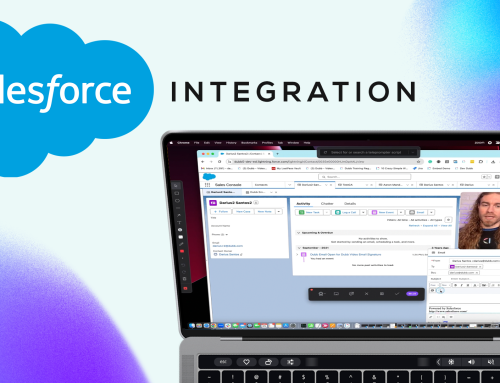By 2021, there will be 3.02 billion active social media users.
How is your brand tapping into this massive and growing audience?
If your advertising and outreach efforts don’t include an element of social media marketing, you’re limiting your potential along with your income.
The most impactful way to incorporate this approach into your existing campaigns? Create compelling video content for your website, and then share it across your channels. From Facebook Live to Instagram Stories, new tools are emerging to help brands showcase their offerings in a creative, visual way.
Yet, not every social media platform is created equal. A web user that frequents one every day may eschew the other. This is because each has its own niche and crowd that it caters to.
It’s important to keep this in mind as you create your next video marketing campaign. Taking the time to tweak and optimize your videos to make them appropriate for each account doesn’t take long but can make all the difference in how many views your content earns.
Today, we’re sharing a few ways you can make these adjustments with ease. Ready to get started? Let’s take a look.
Why Customization Matters
Gone are the days when one product pitch could appeal to your entire target audience. Today’s consumers have more options and connections than ever before, making them more discerning.
If a brand doesn’t offer a tailored marketing approach that appeals to their individual preferences, purchase patterns, and end goals, it’s not difficult for them to find a competitor that does.
The numbers speak for themselves.
According to a recent study, 81% of shoppers want companies to understand them better.
Moreover, 67% of them expect brands to automatically adjust their content to match the current context at hand. When this doesn’t happen, 66% said they’d be discouraged from making a purchase.
The bottom line?
Customization isn’t just a nice-to-have feature in your marketing arsenal. With access to advanced analytics that can provide you a fine-print view of your audience, there’s no reason not to leverage this data to provide a tailored user experience. From direct mail marketing to video, this applies across the spectrum.
To this end, let’s review a few ways you can adjust your video content to match the specificities of each major social media platform.
It’s the most popular social media platform by a landslide, with more than 1.5 billion daily active users. If your company doesn’t have an active Facebook profile, we’ll wait while you go make one.
Looking for ways to maximize your connections and engagement on this massive network? The most popular and well-performing videos on Facebook are those that engage web visitors from the onset.
Most often lasting between 12 and 30 seconds, these are short segments that aren’t too long but deliver tons of entertainment value.
These aren’t meant to go into detail about your product or service. Rather, they serve to pique the interest of your followers. They can also tease longer-form content available on your blog or website.
For previously uploaded videos, you can go up to 90 seconds if you’re seeking to deliver a more in-depth look at your solution or promotion. Yet, when it comes to Facebook Live, you have free creative control.
Live stream your grand opening. Take viewers behind the scenes at your warehouse. Sit on your office couch and make a grand reveal about an upcoming project.
That said, don’t abuse this sky’s-the-limit privilege. Facebook includes analytics under its “Page Insights” tab that help you understand how your posts are performing. From the main tab, click “Post Types” then “All Posts Published.”
Clicking on the individual video’s title will take you to an analytics page, where you can see the post’s engagement level, average reach and more. How are yours faring?
You might find that your shorter snippets are doing well, while your hour-long live videos are lagging, or vice versa. Be willing to adjust your strategy to deliver your viewers the content they crave.
It comes as no surprise that the highest-rated videos on Twitter are super short. This isn’t the place to wax poetic about your company. Make it interesting from the beginning and use your time to sell wisely.
The platform places the official cap on its video lengths at 140 seconds but resist the urge to use up all of that time.
Stick to a sweet spot of around 30 to 45 seconds for maximum viewership.
Not sure what to say in such a short time-frame? Don’t try to squeeze your entire full-length video on here. Instead, save it for your website, landing page or blog post.
Then, create a teaser video that points viewers to a link, where they can watch the full video or download additional content such as a PDF.
YouTube
Did you know that YouTube is the second most popular search engine in the world? It comes in right after Google.
With more than 1.5 billion logged-in users per month, the industry-leading platform streams more than 1 billion hours of video every day.
As such, you don’t need to limit or restrain yourself here. YouTube is the go-to social media platform to showcase your videos in all their glory.
The best part? You can be as flexible as you want.
Upload shorter, 30-second snippet videos to whet your viewer’s appetite and encourage them to subscribe to your channel. Then, deliver other videos at a few minutes long that deliver the in-depth tutorials, FAQs and product descriptions they’re looking for.
From speeches to webinars, YouTube is also a great place to host your long-form videos, as well. House it all here and create a digital content library that your followers can access any time they have a question or want to learn more.
Again, though you have more freedom and flexibility here, don’t abuse it. People don’t come to YouTube to listen to a monotonous business suit talk for an hour. They come to be informed, inspired or entertained, so make sure your content falls into one of these three categories.
Instagram has long been a haven for those looking for visual inspiration. After the launch of its “Stories” feature in 2016, it’s now become a power player in the video space.
If you’re uploading a video into your feed, it can be up to one minute long and becomes a permanent part of your profile. Yet, Google research reveals that most videos hit their maximum views around 30 seconds, so keep it brief if you’re able.
On the other hand, a story only lasts 15 seconds and disappears after 24 hours. That said, you aren’t limited to squeezing all of your content into one 15-second video. Instagram doesn’t limit the number of stories you can upload in a given timeframe, so experiment.
You might find that you get more engagement from five 15-second segments that, when viewed together, tell a cohesive story.
Want to use Instagram to showcase your long-form content? Try IGTV.
This app allows users to watch videos up to 10 minutes long. Verified account owners can posts ones up to an hour in length. While it has yet to make a splash in the B2B sector, IGTV can be a valuable way to appeal to your Instagram followers in the format they prefer.
Put simply, people aren’t flocking to LinkedIn to watch videos of cute kittens or pandas playing on slides.
Rather, this is the go-to spot for B2B professionals to connect with new prospects, network with peers and showcase their work experience and credentials. As such, keep your videos sleek and corporate in tone.
The platform allows you to upload videos up to 10 minutes long. The most valuable way to leverage yours? Stick to content that either explains a complicated concept or establishes you as a thought leader in your space.
Not sure if LinkedIn is the right platform for your company’s videos? Consider the fact that 75% of business executives watch work-related videos every week. Want to get your data into the C-suite? This is the place to do so.
Share your brand story to nab the attention of future business partners. Showcase an exciting new product launch to stir up new interest and drive traffic to your site. You can even make a recruitment video to encourage people to join your team.
Determining the Ideal Aspect Ratio
Industry research reveals that users access these different social media platforms in various ways. As such, it’s important to keep the aspect ratio of your videos flexible. Here are the most common types and where they work.
16:9 Ratio
YouTubers prefer this wide-format ratio, as does anyone on mobile. In most cases, 16:9 is considered a classic format. It’s also useful on Twitter, Facebook, and LinkedIn.
If in doubt, this is the go-to aspect ratio to use.
1:1 Ratio
Ever wonder why Instagram videos appear in squares? It’s because they’re uploaded in a 1:1 ratio. Adjust yours to meet these metrics or it will look choppy.
You can also use this ratio to make your Twitter, LinkedIn and Facebook videos stand out from the crowd.
9:16 Ratio
This is the vertical format that IGTV leverages. Once considered outdated, it’s making a quick comeback. Use it to diversify your videos on Instagram stories or Facebook mobile.
The Live vs. Recorded Debate
Finally, the question comes down to which format you should use when you record your video. While there will always be a place for pre-recorded videos, it’s worth taking the time to experiment a little to see what your audience responds best to.
Live videos have innate elements of excitement, timeliness, and authenticity that can be difficult to convey in a recorded version. They also allow you to engage with your audience in real time.
Consider segments wherein a company leader fields questions from viewers, walks them around an exhibit or trade show, or live broadcasts from an industry event. This is an ideal way to add human connection and make your viewers feel as though they’re a part of the story.
Still, live videos are not appropriate everywhere.
They soar on more laidback platforms such as Instagram Stories and Facebook Live. You may also consider broadcasting a live keynote speech or Q&A session on your company’s YouTube channel or Twitter Live.
Conversely, save your recorded videos for your in-post feeds on Facebook and Twitter. They’re also your best (and only) bet on LinkedIn. In this professional setting, you need content that’s polished, which might require more than one take.
Monetize and Optimize Your Videos Today
Video marketing is likely the most valuable yet under-utilized player in your outreach strategy. This could be because, for years, it was a costly and time-consuming effort.
Now? You don’t need access to pricey equipment to shoot an impressive video that convinces and converts. Nor do you need a professional videographer to take the reins for you.
With the digital tools available today, anyone can create a compelling video to boost company profits, improve brand visibility and engage followers.
But, don’t stop there. When you optimize your videos for social media, you ensure they end up in front of the eyes that want to see them the most.
Need help creating and sharing your visual content? That’s why we’re here.
We offer a video communication platform that makes it easy to make and distribute feature-rich videos across the web. Along the way, you’ll nurture relationships, grow your business and improve your bottom line.
Register for a free trial today to get started. The future is video, and you’re light years ahead.





Leave A Comment